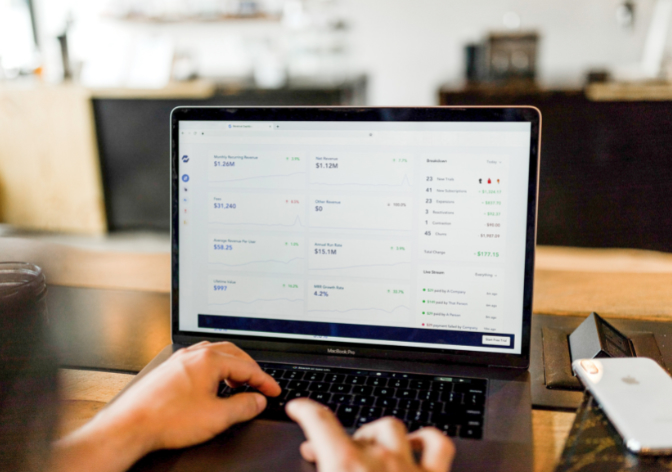What is provisional tax?
Contrary to the belief of many people new to business, provisional tax is not another tax but is instead a way to manage your income tax. Instead of paying your income tax in one lump sum, provisional tax allows you to pay your income tax in instalments. You will automatically be put into the provisional tax regime if your end-of-year tax return is filed and your tax bill is $5,000 or more. If your tax bill is less than $5,000, this will just be payable in one lump sum as Terminal Tax.
Provisional tax is payable for the year following your filed tax return, generally the “current” year, so it acts kind of like a pay-as-you-earn system, a provision for your year-end tax calculation.
Who is likely to be a provisional taxpayer?
People likely to pay provisional tax earn income via the following streams:
- Contractors
- self-employed
- a rental
- a partnership
- from overseas

How does the IRD work out what your provisional tax payment will be?
To calculate your provisional tax payments, the IRD looks at your last filed tax return and adds a 5% uplift, to cover an expected lift in business performance year on year. As you are effectively paying tax based on an estimate, the amount is not always accurate and therefore there may be a small top-up payment required come year end to cover the difference (referred to as terminal tax). Alternatively, if you have paid too much there may be a refund.
Accounting Tip:
The 5% lift forecasted by the IRD for provisional tax is not very scientific, especially if your business is in growth mode! To generate a more accurate forecast of your profit and tax liability it is vital to have up-to-date and precise data recorded in your accounting software.
What options are there for paying provisional tax?
Standard Option
A great option to consider using if your income is steady or you expect it to increase over the next year.
NOTE: The standard option is IRD’s default option.
For further information please visit: Standard option (ird.govt.nz)
Estimation Option
This option is best to use if you know your income is going to decrease over the next year or alternatively if you believe your income will increase a lot.
NOTE: Using this option does open you up to use-of-money-interest (UOMI) and penalties, if the amount estimated is not sufficient to cover your taxes come year-end.
For further information please visit: Estimation option (ird.govt.nz)
Accounting Income Method (AIM)
With this option, you only pay provisional tax when your business earns a profit. AIM is available to businesses and individuals with an annual turnover of less than five million dollars.
NOTE: You have to choose this payment option each year as you will automatically be moved to the standard option at the beginning of each tax year.
For further information please visit: Accounting income method (AIM) (ird.govt.nz)
Ratio Option
A great option to consider using if your income tends to fluctuate, if you file returns monthly or 2-monthly, or if you're GST registered.
NOTE: You must apply in writing to use the ratio option and you will need to choose this payment option each year as you will automatically be moved to the standard option at the beginning of each tax year.
For further information please visit: Ratio option (ird.govt.nz)
Voluntary Payment
This option is exactly as the name suggests – voluntary. This is when you are not required to pay provisional tax (i.e. your previous tax bill was under $5,000) however you voluntarily make payments to the IRD as you’re anticipating a much higher profit and/or you want to ease the impact on cashflow at year-end.
How do I calculate provisional tax payments?
Calculating provisional tax payments with the standard option
To work out your payment based on the standard option you add 5% to your previous year’s residual income tax (RIT), to account for the forecasted uplift in business income.
For example, if your previous year's RIT was $10,000 your provisional tax would be $10,500.
Unless you are registered for 6-monthly GST, you will pay 3 equal instalments during the year. If we use the above example your instalments would be $3,500 per instalment to total $10,500.
If you are registered for 6-monthly GST returns you will pay 2 equal instalments during the year. If we use the above example your instalments would be $5,250 per instalment to total $10,500.
You may need to pay an additional tax in the form of terminal tax once you have filed your end-of-year income tax return if your profit has increased more than IRD’s forecasted 5% uplift.
For further information please visit Work out provisional tax using the standard option (ird.govt.nz)
Calculating provisional tax payments with the estimation option
To work out your payment based on the estimation option you will need to estimate what you believe your income tax will be and pay an instalment of this estimation. It is important to frequently review your estimations and adjust future payments accordingly, especially if you start to see an increase in income. Penalties or interest could be charged if your estimations are too low when compared to your filed income tax return.
For further information please visit IRD’s Work out provisional tax using the estimation option (ird.govt.nz)
Calculating provisional tax payments with the accounting income method (AIM) option
To work out your payments you will need to first ensure you are eligible to use AIM. You will then need to set up your AIM software, Xero has this available in their Xero Tax. Your AIM software will require you to submit a statement of activities which will be the basis for which your AIM software will work out your provisional payments. AIM returns/payments are due at the same time as your GST return.
For further information please visit IRD’s Work out provisional tax using AIM (ird.govt.nz)
Calculating provisional tax payments with the ratio option
To work out your payments based on the ratio option, you will need to contact the IRD to obtain your ratio percentage. To calculate your ratio, the IRD will divide your residual income tax for your previous tax year by your total GST taxable supplies (total sales/revenue recorded in your GST returns) for the same year. You will then need to multiply this ratio percentage by your GST-taxable supplies for the previous 2 months.
Your provisional tax payments will be paid at the same time as you file your GST returns. If you complete your GST returns on software such as Xero, there is an option for this to be automatically calculated for you with your GST return, however, you will still need to obtain your ratio from the IRD first so that this can be entered into Xero as a basis for the calculation.
For further information please visit IRD’s Work out provisional tax using the ratio option (ird.govt.nz)

When is provisional tax due?
The due dates for provisional tax can differ depending on:
- What payment option you choose to use; Standard, Estimation, AIM, or Ratio
- Your balance date
- If you are/are not registered for GST
Check out the IRD’s website for a full list of due dates here, split out by the chosen payment methods: Payment dates for provisional tax (ird.govt.nz)
If you are using the standard or estimation payment methods a great calculator which spits out due dates by your balance date can be found here: Provisional Tax Calendars | Never miss a tax payment again | TMNZ
Here is an example in action;
If you have a 31 March balance date for the 2023 year (which is standard) and don’t pay 6 monthly GST or AIM returns, standard provisional tax is due in three instalments:
- 28th of August 2022
- 15 January 2023
- 7th of May 2023
- With terminal tax (if any) due 7 April 2024.
What is terminal tax?
Terminal tax is the leftover income tax to pay that was not paid for during the year via provisional tax payments. This can be due to your business income increasing more than the estimated 5% forecasted by the IRD.
Why was I charged interest on my provisional tax?
The IRD may charge you ‘use-of-money’ interest on provisional tax payments that are late or underpaid. The flipside being that they may pay you ‘use-of-money’ interest on provisional tax payments that are overpaid.
These payments and charges differ depending on the payment basis you have chosen. For more detailed information on the payment/charging procedures please visit Interest on provisional tax (ird.govt.nz).
NOTE: Interest charges or payments are calculated once your income tax return has been filed. The exception to this is if you pay using the AIM method, in this case you will be charged interest (and any penalties) the day following the due date of each payment instalment.
Cashflow effects of provisional tax in your first year of business
The income tax generated from the first year of being in business is normally due as terminal tax on the 7th of February of the following year, (unless you have an agent, such as RightWay, then the due date moves to the 7th of April). This can result in having to pay your first year’s income tax at the same time as you are paying provisional tax for your second year of business.
Having to effectively pay a ‘double tax’ can be quite tough on a new businesses cash flow, especially if it was not forecasted for.
One way to stop this issue from arising is to use the Accounting Income Method (AIM) for provisional tax. AIM allows you to start paying more frequent (and therefore smaller) amounts of provisional tax as soon as you begin to trade.
Accounting Tip:
Put money aside to cover future tax bills as soon as income starts to come in. This will help to ease the cash flow effects of having to pay a double tax bill. As a guide, expect to pay around 30% of your annual income in tax.

What is tax pooling or tax management?
Sometimes, rather than making tax payments directly to the IRD, people pay into a tax “pool” held by an IRD-approved intermediary such as Tax Management New Zealand (TMNZ). This money can earn interest and then when the exact tax obligation for the individual/entity is known (e.g. when their tax return is filed), the tax intermediary will transfer the correct amount over to the IRD as if it were paid on the due dates.
As well as deposits, TMNZ can also be used for withdrawals to pay tax retrospectively for taxpayers who did not have available cash flow at the time their payments were due.
For example, if during the year a taxpayer cannot afford to pay their provisional tax instalments, or short-pays them when their year-end tax return is filed and their exact tax is known, they can purchase “back-dated” tax credits from TMNZ. The tax credits will be transferred to the IRD as if they were paid on the due dates, eliminating any penalties and interest charged by the IRD.
TMNZ does still charge interest, however at a lower rate than IRD. Payments can be made in a lump sum or in smaller instalments to better suit the cash flow of your business, TMNZ also allows for a longer payment period than the IRD.
Note: Tax pooling or tax management can only be used to pay income tax, not GST or PAYE.
How do I set up tax management?
Contact RightWay, we can provide a quote for how much you would be paying with IRD vs. what you would be paying with an intermediary like TMNZ so that you can see which option suits you best.
Accounting Tip:
Work with your advisors to complete a tax forecast that calculates a percentage that you need to set aside to cover your future tax payments. Utilising a percentage that is based on your business's forecast should provide you with a much more accurate calculation of what will be due, therefore reducing the risk of you running into cash flow issues.
Want to learn more?
For more information on Provisional Tax and Tax Management check out our Better Business, Better Life podcast episode
Further Reading on the topic
Here are some other useful resources from around the web:
- To find out more about Tax Pooling with TMNZ click here.
The above information is general and does not represent tailored advice for your business. For more specific guidance, get in touch with our team who can connect you with one of our accountants. For official tax advice from the Inland Revenue, get in touch with them directly or visit their website.
Read our other Accounting guides
We’ve all heard of GST, (short for “Goods and Services Tax”) as we’ve had to pay it! It’s that annoying tax that makes goods and services more expensive right?
But what about if you are the person selling the goods or service? GST from this angle is far less understood and can be far more complicated.
In this blog, we are going to dive into all things GST answering all those nitty-gritty questions, including, when you should register for GST, the rules around filing your returns, and which accounting basis could be right for you...
Paying tax is a fact of life for anyone earning a living - businesses included. In this article, we discuss some of the aspects of tax compliance that you should be aware of as a business owner, including PAYE, Business Income Tax, business expenses, GST, balance dates, Kiwisaver, student loans, and actually paying your tax.



